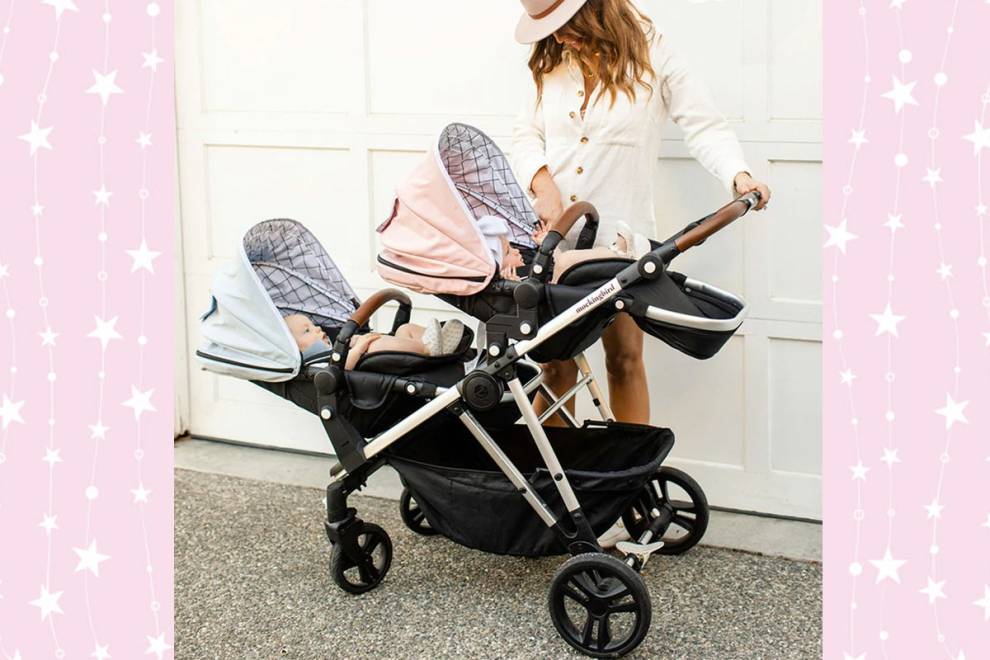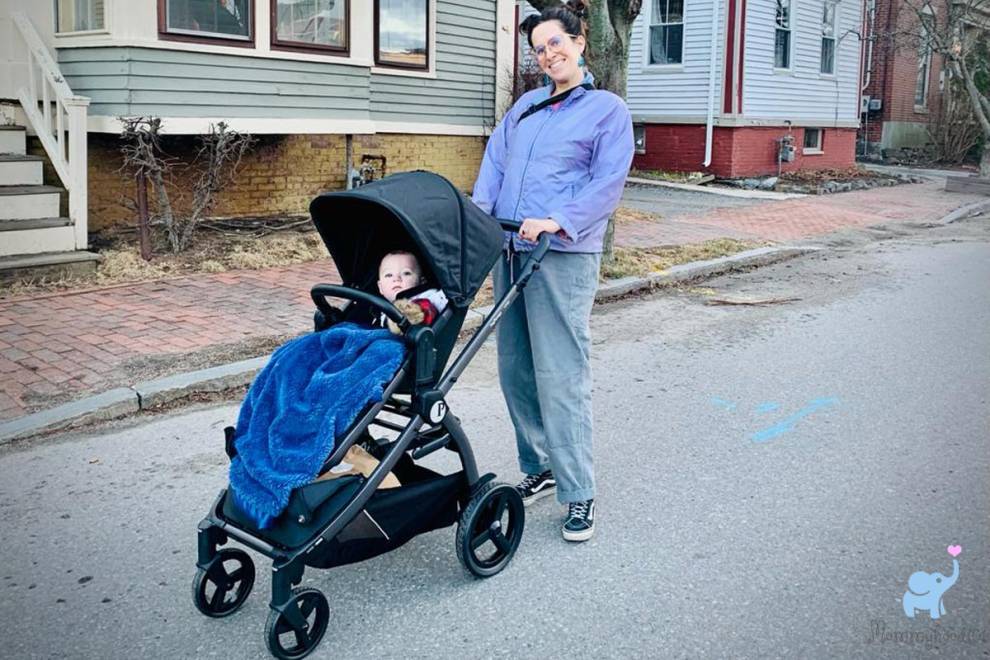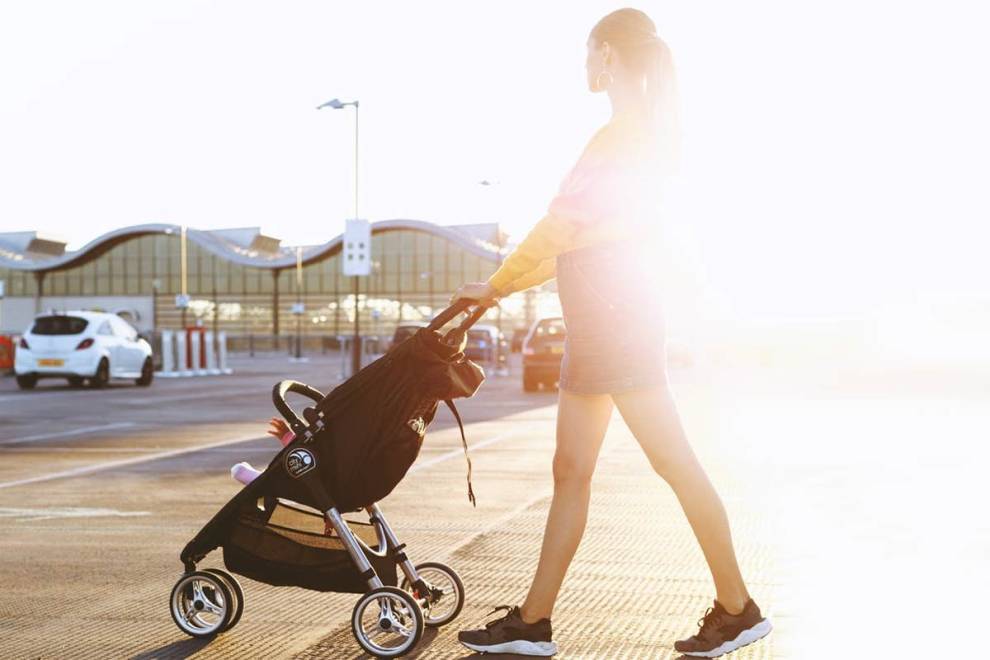Buckle up, baby! We help you find the perfect car seat for your little one.
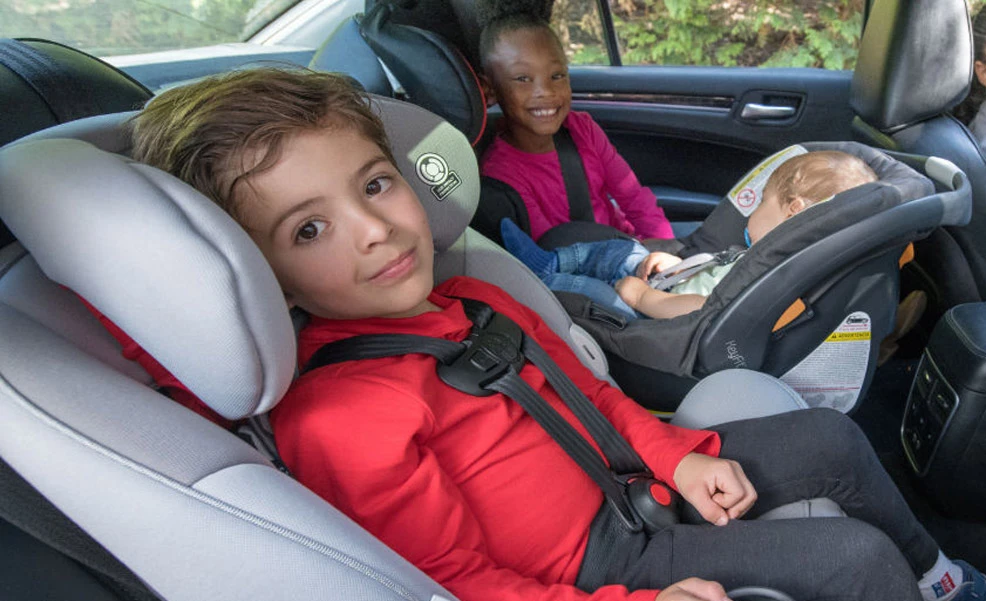
Mommyhood101 independently tests and curates baby gear to help you make informed decisions. If you buy products through links on our site, we may earn a commission.
Finding the perfect car seat for your baby is one of the most important and stressful things you will do as a new parent!
You will find yourself asking questions like: Will it be safe? Comfortable? Lightweight? Well-made? Will it fit in my car? What are the crash test ratings? How long will it last? Will my baby grow out of it? What if I have a preemie? Does it fit my style? Do I need a convertible car seat or an infant car seat? And finally, can I afford it?
Add these questions to the constantly evolving requirements and recommendations of car seat experts, and things can get serious really quickly!
Types of Car Seats
No need to stress - our car seat buying guide will give you the information and confidence you need to find the perfect car seat for your family's unique needs.
"Finding the right car seat and installing it correctly are two of the most important things you can do for your baby's safety." - Dr. Longford, Pediatrician
Forward-facing versus rear-facing
Let's begin with the difference between rear-facing and forward-facing car seats. All babies start rear-facing, meaning they face the back of your vehicle while seated in their car seat.
The rear-facing position is the safest orientation for infants and toddlers, as it distributes crash forces more evenly across the back and head. The below animation shows how impact forces differ between rear- and forward-facing configurations.
The baby on the left is in a rear-facing infant car seat, and the baby on the right is in a front-facing car seat. Notice how the rear-facing car seat absorbs most of the impact forces, reducing stress on the head, neck, and spine.
This is why rear-facing is so much safer than forward-facing:

To maximize safety, children should remain rear-facing for as long as their car seat allows. Many convertible seats now support extended rear-facing up to 50 pounds or more. Once your child exceeds the rear-facing height or weight limit (often around 40–50 pounds or 40–49"), transition to a forward-facing seat with a 5-point harness. These typically accommodate children up to 65 pounds.
Now let's look at the different types of car seats that support these positions.
Infant Car Seats
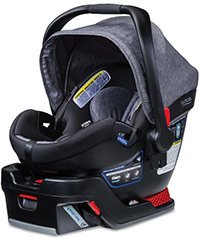
These rear-facing-only seats are designed for newborns and young infants. They include a carrying handle and attach to a base that stays in your car. Most also connect directly to compatible strollers. Modern infant seats typically support babies from 4 to 35 pounds and up to about 32–35" tall. Most include newborn inserts for smaller infants, including preemies. Check out our best infant car seats.
Advantages include portability, light weight, and the ability to move a sleeping baby without unbuckling them. Downsides include limited lifespan and legroom as your baby grows. Once your child is about 9–12 months or 20–25 pounds, most families transition to a convertible seat.
Convertible Car Seats
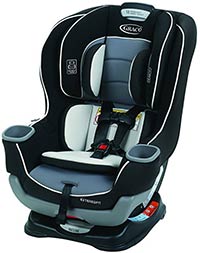
Convertible seats can be used rear-facing for infants and toddlers, then turned forward-facing for older children. Some 3-in-1 and 4-in-1 models also convert to booster seats, allowing use up to 100–120 pounds. The Graco Extend2Fit, Nuna Rava, and Britax One4Life are excellent examples of extended-use convertible car seats.
Many now allow rear-facing up to 50 pounds, accommodating taller or older toddlers safely. They are heavier and bulkier than infant seats but offer long-term value. Read our reviews of the best convertible car seats.
"Use an infant seat for the first year, then switch to a convertible with extended rear-facing support." - Kate Marijk, CPST & Mom of 3
Booster Car Seats
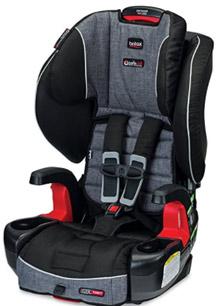
Booster seats position the vehicle’s seat belt properly on your child’s chest and hips. They come as high-back or backless boosters. Combination seats can start as forward-facing harnessed seats and convert to boosters later. We recommend using boosters only once your child has outgrown their forward-facing seat (usually at least 40 pounds and 4 years old). See our best booster car seats.
Current Car Seat Guidelines
The American Academy of Pediatrics (AAP) and the National Highway Traffic Safety Administration (NHTSA) continue to recommend keeping children rear-facing for as long as possible, ideally until at least age 2, but preferably until the height or weight limit of their seat is reached. See the latest AAP guidance and NHTSA guidelines.
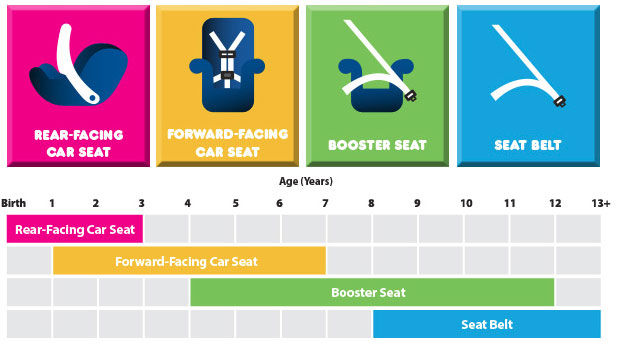
Infants start rear-facing and stay that way until they exceed the seat’s limits. Convertible models like the Graco Extend2Fit and Nuna Rava now allow rear-facing up to 50 pounds. After that, forward-facing with a harness until at least 65 pounds or age 7, then a booster until the seat belt fits correctly, usually around ages 10–12.
Quick Reference: Rear-facing → Forward-facing with harness → Booster → Seat belt. Children typically progress through these stages between birth and 12 years, depending on height and weight limits.
Car Seats - Things to Keep in Mind
Parents frequently make installation errors. To learn how to avoid the most common mistakes, see our car seat mistakes article.
Your Car Matters. Most vehicles since 2002 include the LATCH (Lower Anchors & Tethers for Children) system, simplifying installation. The system can usually be used up to a combined weight (child + seat) of 65 pounds; check your car and seat manuals for limits. Beyond that, switch to seat belt installation.
Vehicle size and shape affect fit. Some larger car seats can crowd the front seats in small vehicles. If you need to fit multiple car seats across, check out our narrowest car seats.
Track Your Child’s Growth. Most kids reach a car seat’s height limit before the weight limit. For example, a 40" height limit may be reached around age 4, even if your child weighs less than 40 pounds.
Installation Help. Correct installation is critical. Watch tutorial videos, read your manual, and visit a local certified Child Passenger Safety Technician (CPST). You can find one here.
Even the best car seat can’t protect your child if it’s installed incorrectly.
Features to Look for in a Car Seat
No-rethread Harness. Essential for convenience and safety, this allows you to adjust the harness height without uninstalling the seat.
Extended Rear-Facing Capacity. Choose seats that allow at least 40–50 pounds rear-facing to follow AAP recommendations.
FAA Approval. If you fly often, check for FAA approval stickers on the seat shell.
Side Impact Protection. Look for enhanced padding or adjustable energy-absorbing wings. Cybex and Britax are leaders here.
Steel-reinforced Frames, Load Legs, and Anti-rebound Bars. These features increase crash stability by reducing motion and distributing forces. Seats like the Britax Advocate and Peg Perego Primo Viaggio Nido include them.
Energy-Absorbing Foam (EPP or EPS). Standard in quality seats, helps dissipate impact forces effectively.
Crash Testing & Ratings. Consumer Reports and the IIHS publish updated results for many seats, supplementing federal safety standards.
Wide Adjustability & Comfort. Look for multi-position reclines, adjustable headrests, and breathable, washable fabrics. Convenience features like ClickTight or RapidRemove covers can make daily use easier.
Recent Safety Innovations
The past couple of years have brought exciting advances in car seat technology, making installation easier and crash protection even better. Here are a few of the most noteworthy updates:
- SmartSecure Sensor Systems. Some of the newest models from brands like Britax and Evenflo now feature built-in smart sensors that confirm correct installation, recline angle, and tension. These systems use indicator lights or mobile app connections to alert parents if the seat is improperly secured or if the child is unbuckled while the vehicle is moving.
- ClickTight+ and EasyLock Systems. New-generation tightening mechanisms like Britax ClickTight+ and Chicco SuperCinch have further simplified installation. They provide audible or visual confirmation that the seatbelt is locked and tensioned correctly, dramatically reducing common installation errors.
- Enhanced Anti-rebound and Load-leg Protection. More modern seats are including both anti-rebound bars and load legs - features once limited to premium European models. These elements reduce rotation and rebound in crashes, minimizing neck and spinal stress. Popular examples include the Peg Perego Primo Viaggio Nido, UPPAbaby Mesa Max, and Britax One4Life ClickTight+.
- Improved Side-impact Pods and Energy Absorption. Systems like Cybex’s Linear Side-impact Protection Plus and Graco ProtectPlus Engineered foam designs continue to evolve, offering broader coverage and better force distribution for head, neck, and torso regions.
- Climate and Comfort Upgrades. Recent seats use breathable mesh fabrics, removable machine-washable covers, and built-in ventilation channels. Some, like the Nuna REVV and Evenflo Revolve360 Extend, even include easy-rotate bases for safer loading and unloading.
IIHS Best Picks and Crash Test Leaders
The Insurance Institute for Highway Safety (IIHS) continues to test and rate booster and child car seats for belt fit and ease of use. Their Best Bet picks highlight seats that achieve excellent belt positioning and usability across a variety of vehicles.
Recent IIHS "Best Bet" booster seats include:
- Britax Highpoint 2-Stage
- Graco TurboBooster LX
- Clek Oobr
- Chicco KidFit ClearTex Plus
- Evenflo GoTime LX
For convertible and infant seats, while IIHS doesn’t publish overall safety scores, independent testing from organizations like Consumer Reports and BabyGearLab continues to identify the Britax One4Life ClickTight+, Graco Extend2Fit 3-in-1, and Nuna PIPA urbn among the safest and most user-friendly models.
Be sure to check the latest IIHS booster evaluations and Consumer Reports crash-test updates each year to stay informed about which models meet or exceed evolving safety standards.
Note: Always follow your specific car seat and vehicle manuals for installation and safety instructions. State laws may vary.
Car Seat Buying FAQs
- When should I switch from an infant to a convertible car seat? Most parents switch around 9–12 months, or when their baby exceeds the infant seat’s height or weight limit. Always check your specific seat’s manual, as some infant seats can accommodate babies up to 35 pounds or 32–35 inches tall.
- Can I use a secondhand car seat? Only if you know its full history, it has never been in an accident, and it hasn’t expired. Car seats typically expire 6–10 years from the date of manufacture because of wear and evolving safety standards.
- What does FAA-approved mean? It means the car seat is certified for use on airplanes. Look for a red sticker that reads "This restraint is certified for use in motor vehicles and aircraft." Booster seats are not FAA-approved because airplane seats lack shoulder belts.
- How do I know if my car seat is installed correctly? The seat should not move more than one inch side-to-side or front-to-back at the belt path. Always read your car seat and vehicle manuals, and consider visiting a certified Child Passenger Safety Technician (CPST) for a free inspection.
- Should my child wear a coat in the car seat? No. Puffy jackets or snowsuits can compress in a crash, leaving the harness too loose. Instead, buckle your child snugly in thinner layers and place a blanket or jacket over the harness for warmth.
- What is the LATCH system, and when should I use it? LATCH (Lower Anchors and Tethers for Children) is an installation method that uses anchors built into your vehicle instead of the seat belt. It’s generally allowed until the combined weight of the seat and child reaches 65 pounds; after that, switch to a seat belt installation.
- When can my child safely switch to a booster seat? Once they outgrow their forward-facing harnessed seat, usually around age 4 and at least 40 pounds. The seat belt should fit snugly across the shoulder and lap, not the neck or stomach.
- When can my child sit in the front seat? The American Academy of Pediatrics recommends keeping all children in the back seat until at least age 13, as it offers the best protection in a crash.
- What are the most important car seat safety features to look for? Prioritize a 5-point harness, side-impact protection, steel-reinforced frame, energy-absorbing foam, and features like load legs or anti-rebound bars for added stability.
- How can I check for car seat recalls? Visit NHTSA’s recall database and register your car seat with the manufacturer to receive recall or safety notices automatically.







